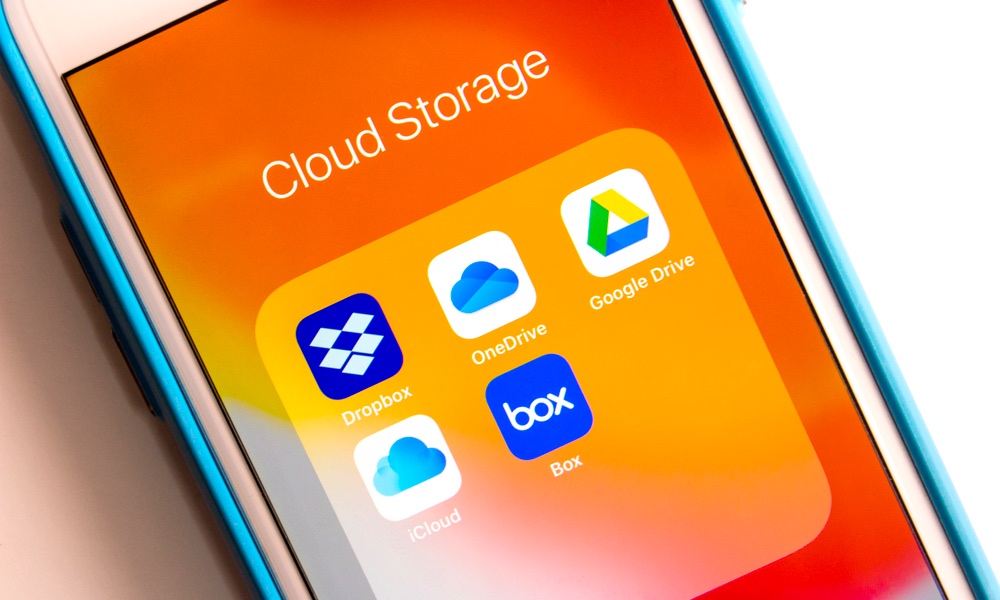6+ Good Reasons Today’s Employers Provide Apple Devices for Work
 Gaudilab / Shutterstock
Gaudilab / Shutterstock
It’s 2022, and Apple is more work-friendly than ever. Though, that wasn’t always the case as MacBooks, iPhones, and iPads have had a rough history in the professional workplace. Outside of design or creative-oriented tasks, Apple devices were often thought of as second-tier choices, less versatile devices that couldn’t be upgraded, didn’t have compatibility with the necessary workplace apps, and required too much dependence on the overall Apple ecosystem.
That’s changed. Apple partner Kandji surveyed employees and found that not only was a free Apple device a significant factor in employees accepting a job, but that Gen Z employees were also significantly more likely to think so. Other studies of IT decision-makers in 2020 showed that the majority preferred to use Apple devices for work, more than ever before, while 85% of IT professionals said they would recommend Apple devices for professional use.
Mac sales alone now account for around 23% of all enterprise PC sales. What happened? Let’s take a look at how things have changed. Continue reading to browse 6+ Good Reasons Today's Employers Provide Apple Devices for Work.
Tech Support Savings
“Apple is just too expensive” has been an opinion in many workplaces looking to save money when purchasing computers. But the math doesn’t quite work out. Products like Macs have a high initial cost when first purchasing – but they also have very high long-term savings. They cost significantly less when it comes to tech support, problems can be solved more easily, and there are fewer repair issues. They also tend to last longer than alternatives, and Apple guarantees support up to around seven years. When it’s time for an upgrade, resold Apple products generally will earn you more toward purchasing new devices. Plus, if you check out laptops or PCs with similar specs to today’s Macs, the price difference isn't nearly as significant as it once was.
Cross-Platform Compatibility Is Now Common
Worried that macOS or iOS won’t support a critical business app? You probably don’t need to sweat it. Over the past decade, developers have embraced cross-platform design, including support for all kinds of important business apps. From the entire Office 365 suite including Word and Excel to team communication apps like Teams and storage apps like OneDrive, they all work smoothly with Apple products these days. That includes syncing, regular updates, new versions, and administrator control – everything IT wants for a virtual workplace. Outside of very specific applications in certain industries, this is now a moot point.
Web Apps and Cloud Storage Is the Norm
A similar factor in the rise of Apple at the workplace is the growth of using internet-based solutions instead of local-based solutions. Web apps are easy to access from most browsers and allow users to perform many tasks online (this is also the reason that Chromebooks have become a popular pick in some situations). Cloud storage helps a lot, too. iCloud, Google Drive, OneDrive, Dropbox – they all work on Apple devices, and support easy sharing of documents or ideas no matter what devices your peers are working from. That makes it even easier for teams to work on projects without worrying about what platform they’re on.
Increased Security
This has always been a feather in Apple’s cap, and something IT has long appreciated – while not perfectly safe, Apple’s enclosed app environment does have a lot of protections against malware or viruses. They are, overall, safer picks for businesses to use if they are investing in data security or worried about ransomware attacks. If employees are using personal data for work-related purposes, there are a lot of security reasons to hope (and encourage) them to use Apple devices.
Ease of Use
Apple’s
hardware and operating systems are designed for quick, intuitive learning
curves. That doesn’t always succeed, but overall it’s easy for employees to
pick up and learn an Apple device or app compared to alternatives like Android.
That’s a win for employers that need to complete training ASAP and want to
avoid mistakes caused by confusing systems or switching between different types
of hardware.
Apple has leaned into this, too: The iPad Pro was specifically designed for the office, to show how a larger iPad’s ease of use could figure into all kinds of workstations. The iPad’s mobility also makes it easy to carry around to meetings, presentations, or some quick collaboration. It’s no surprise that COVID-19 also coincided with higher iPad sales for education and work purposes.
Employees Prefer Them
The rise of remote work in the past couple of years is obvious – and many employees are accepting those hybrid work situations are here to stay even if the pandemic is slowly fading. But here’s the funny thing: When employees are given more freedom to choose what devices they work from, more choose Apple. That led to growing requests for IT to make sure company tasks are prepared for Apple devices, but businesses quickly realized there wasn’t much to worry about. Work-from-home allowed many more Apple devices into workspaces, and their use is now more accepted than it was.






